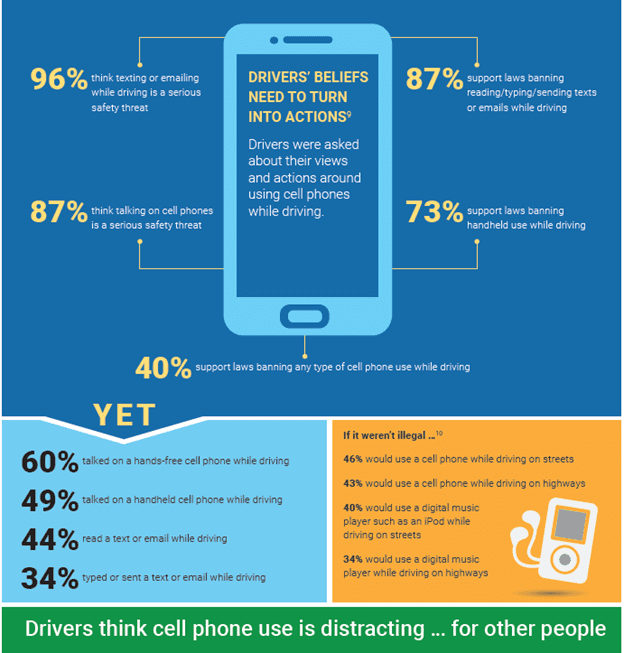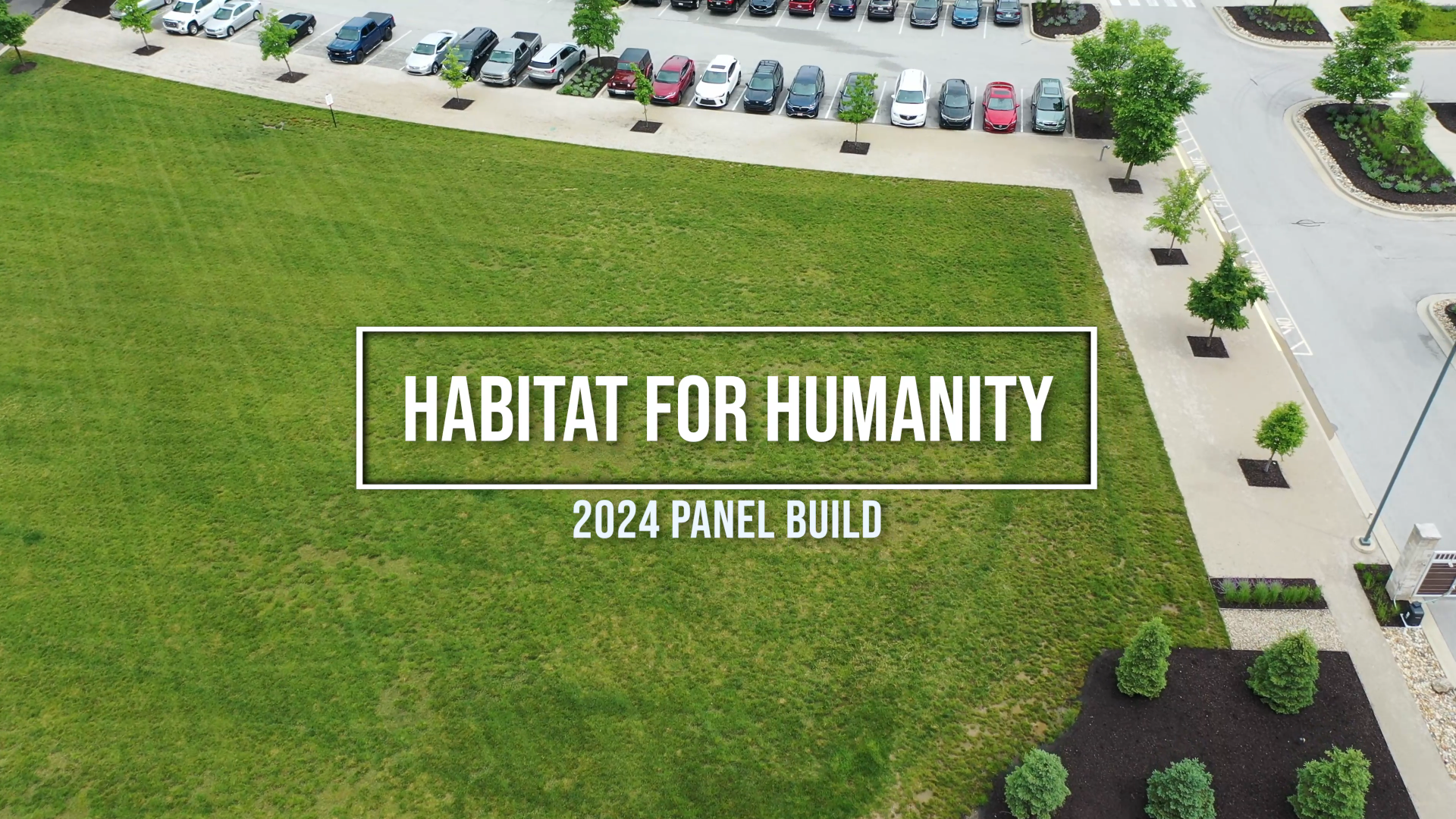Just Drive
Though traffic has dropped significantly since the start of the COVID-19 pandemic, our roads have only gotten more dangerous. On a typical day, more than 700 people are still injured in distracted driving crashes. Talking on a cell phone – even hands-free – or texting or programming an in-vehicle infotainment system diverts your attention away from driving. Keep yourself and others around you safe and #justdrive.
The distracted driving problem
Distracted driving is inattention that occurs when drivers divert their attention from driving to focus on another activity. Distractions may be from using electronic devices such as cell phones or navigation systems, or other types of distractions such as eating or even talking to passengers.
Most people recognize when they are visually and/or manually distracted and seek to disengage from these activities as quickly as possible. However, people typically do not realize when they are cognitively distracted.
Types of distracted driving
Cognitive: The mental workload associated with a task that involves thinking about something other than driving
Manual: Tasks that require the driver to take a hand off the steering wheel and manipulate a device
Visual: Tasks that require the driver to look away from the roadway
Visual/Manual: Tasks that draw eyes and a hand off steering wheel to manipulate a device
Types of Tasks
Primary – Task that receives higher cognitive focus
Secondary – Task that is monitored in the background
The Results of Distraction
- Eight people die every day on our roads in distraction-affected crashes.
- National Safety Council data analysis shows 2,841 people died in distraction – affected crashes in 2018. This means eight people die every day on our roads from a completely preventable cause.
- The same year, an estimated 276,000 people were injured in distraction – affected crashes, and
- There were an estimated 659,000 distraction – affected crashes resulting in property damage only.
Looking but not seeing: inattention blindness
Vision is the most important way drivers get the information they need to drive safely. Yet drivers using cell phones have a tendency to “look at” but not “see” objects.
- Estimates indicate drivers using hands-free cell phones look at but fail to see up to 50% of the information in their driving environment.
- Cognitive distraction causes the driver to divert attention from the visual scene, and only a portion of the information the driver sees is processed by the brain.
- Even when a driver’s eyes are on the road and hands are on the wheel, cognitive distraction causes significant impairments to driving – known as tunnel vision.
More News From Heritage
-
6/27/24
Heritage Environmental Services to Acquire EBV from General Dynamics
Heritage Environmental Servicess, an EQT Infrastructure portfolio company, will acquire EBV from General Dynamics
-
6/13/24
Meet The Facilities – East Liverpool
An inside look at our incineration facility located in East Liverpool, OH
-
5/24/24
Habitat for Humanity 2024
Heritage hosted our 14th annual Habitat for Humanity build this month, partnering with over 50 employees from various THG companies.
-
5/6/24
Date set for the household hazardous waste collection in East Liverpool, Ohio
-
3/12/24
Equal Pay Day – Spotlighting Our Female Drivers
-
3/8/24
International Women’s Week Spotlight – Shannon Dippel
For International Women's Week, we're spotlighting some of the incredible women in the Heritage family. Our final spotlight is Shannon Dippel.
-
3/8/24
International Women’s Week Spotlight – Susan Adams
For International Women's Week, we're spotlighting some of the incredible women in the Heritage family. Our sixth spotlight is Susan Adams.
-
3/7/24
International Women’s Week Spotlight – Lea Wilson
For International Women's Week, we're spotlighting some of the incredible women in the Heritage family. Our fifth spotlight is Lea Wilson









